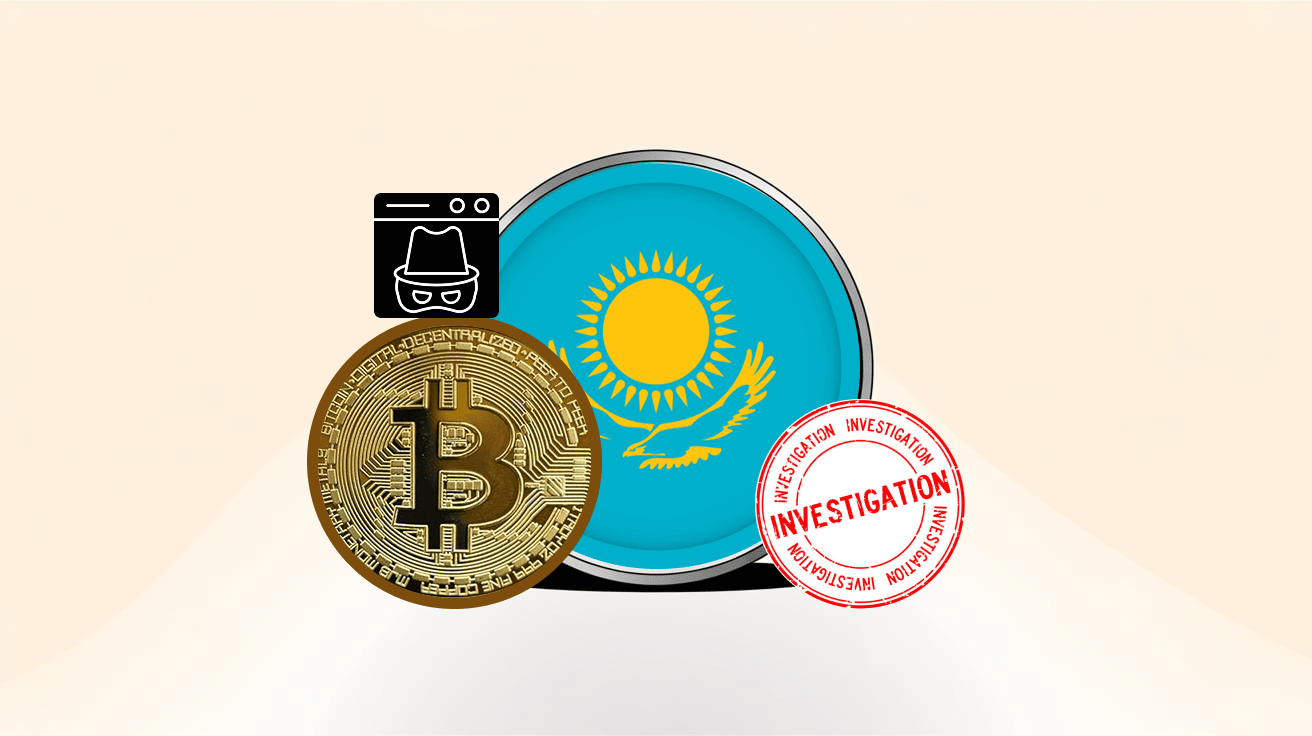Law enforcement agencies have struck another significant blow against the dark web’s crypto economy with the takedown of the RAKS cryptocurrency exchange. Authorities in Kazakhstan dismantled the platform, which served as one of the largest money-laundering services in the Commonwealth of Independent States (CIS).
The region’s largest cryptocurrency laundering shuttered
Kazakhstan’s Financial Monitoring Agency (AFM) successfully closed down RAKS crypto exchange, on grounds of laundering millions from online fraud and drug trafficking on the darknet markets.
Dubbed the largest exchange in the Commonwealth of Independent States (CIS), the platform had operated secretly for three years, facilitating transactions for over 200 online drug shops and collaborating with approximately 20 major darknet markets.
The AFM identified the entity while monitoring suspicious cryptocurrency transactions. In fact, it said that it offered “professional services” for laundering money from drug trafficking and online fraud. Besides, the FMA cited the exchange’s lack of transparency, which includes unverified ownership as well as no audit disclosures, as some of the top factors that made RAKS a home for illicit finance.
Unlike regulated platforms, RAKS exchange disclosed no licenses, ownership details, or audit reports. Furthermore, no evidence existed of partnerships with legitimate businesses. Its only confirmed affiliations were with darknet markets, which relied entirely on the exchange for money laundering and liquidity.
This case reflects a familiar pattern among shadow cryptocurrency exchanges: they project stability while functioning as conduits for a plethora of illegal markets. Once exposed, these platforms typically vanish, stranding users and their funds while leaving regulators to trace the complex financial flows.
The shutdown saw about 67 crypto wallets blocked and almost 10 million USDT frozen by the AFM, resulting in crippling a significant financial artery of several darknet markets.
The signs of a possible collapse were already playing out before the law enforcement agency’s intervention. For instance, the social media accounts of RAKS had disappeared, its customer support wasn’t operating, and several unpaid bonds were being reported on forums. There are some events that observers now regard as clear red flags of RAKS’ demise.
Nevertheless, as per the regulator, RAKS crypto exchange has now been completely shut down; all social media accounts have been deleted, and its customer support has been discontinued. Moreover, the agency continues to look for the main owners of RAKS.
The end of illicit activities? What is next for crypto?
Kazakhstan’s action aligns with intensified global efforts to dismantle the dark web’s crypto infrastructure. The takedown of RAKS follows a series of international enforcement actions, including a major operation earlier this year where Europol and the U.S. Department of Justice (DOJ) collaborated to shut down one of the largest Monero-based darknet markets.
This global crackdown has multiple fronts. In 2023, U.S. and German authorities seized ChipMixer, a service that had laundered over $3 billion in crypto assets. That severely disrupted a critical tool for obfuscating illicit funds.
Adding to these efforts, authorities, with assistance from Binance’s investigations team, recently closed one of the largest fentanyl precursor chemical markets on the dark web.
The closure of RAKS has dealt a huge economic blow to the underground drug trafficking infrastructure, reduced drug market turnovers, destabilized supply chains, and undermined consumer confidence in the illegal platforms.
Such huge busts typically send ripples of apprehension in the broader crypto market. For instance, they usually result in dips in various crypto prices, as seen with Bitcoin, which experienced a decline before recovering quickly again. However, in the long term, the prices tend to be nuanced.
Most individuals in the crypto community view these crackdowns as a positive move, arguing that purging the illegal actors will help de-associate crypto from crime, and hence increase legitimacy that can give way for a broader mainstream adoption.
However, at the moment, we can expect periods of heightened scrutiny that could potentially lead to increased volatility as the investors digest the implications of these significant crackdowns. Going forward, we can expect a mature as well as integrated cryptocurrency landscape.
The takedown of the RAKS, the notorious crypto exchange, serves as a critical case study in the evolving battle against cybercrime finance worldwide. It demonstrates a key shift: law enforcement is no longer just targeting the storefronts (the darknet markets) but is successfully dismantling the core financial infrastructure that powers them.
For cybersecurity professionals, the major takeaway is global agencies’ enhanced capabilities to trace and disrupt cryptocurrency flows successfully. This capability erodes a fundamental pillar of criminal OpSec (Operational Security). This event signals that the anonymity of crypto-based money laundering is increasingly a myth, which might now force threat actors to adapt and complicate their ability to profit from illicit activities.
